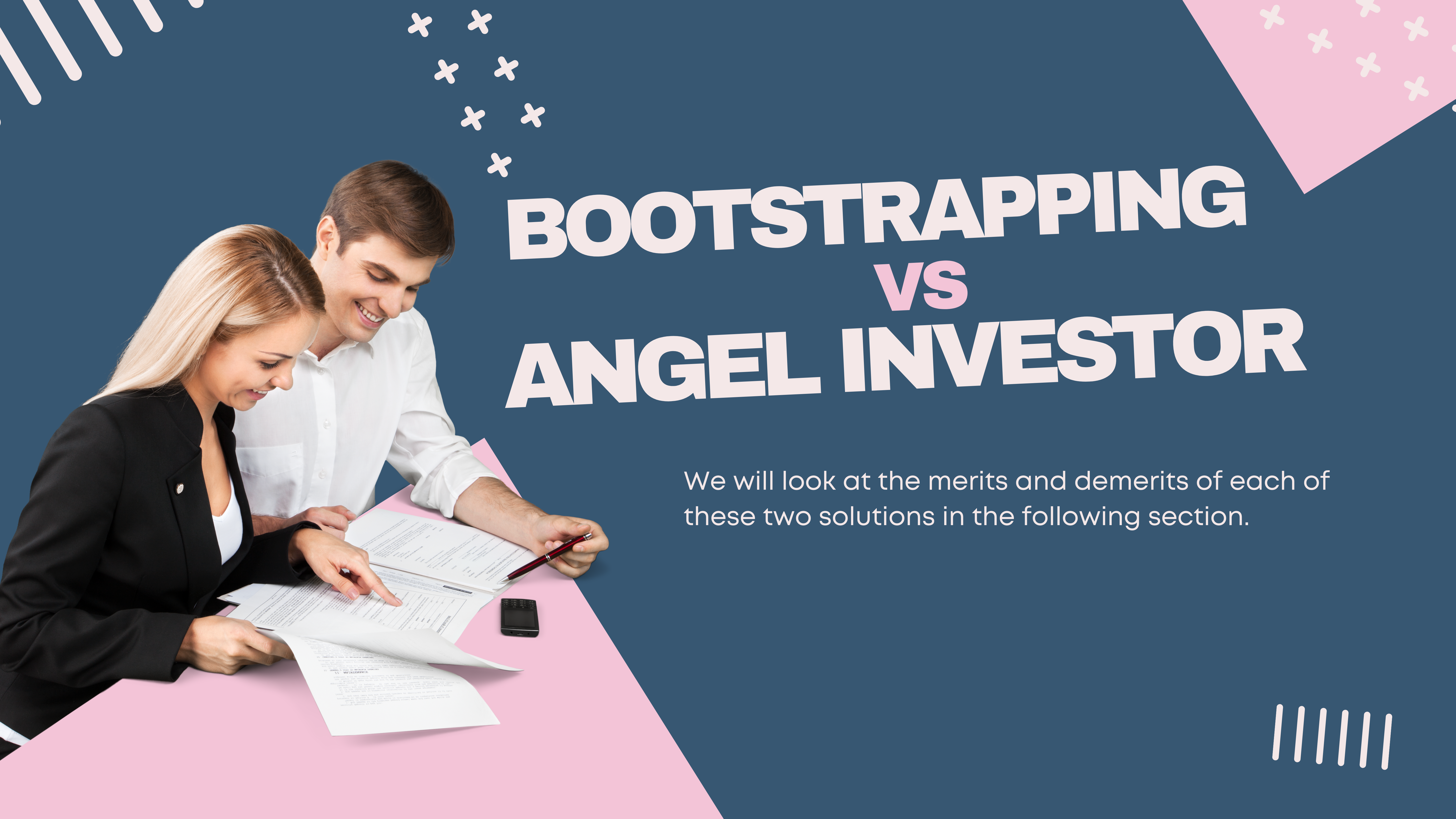Launching our new business is an exciting as well as challenging thing. What is one of the biggest challenges entrepreneurs face while starting a business is finding necessary capital to make our business work. Now what are the different ways a person can get money to start his startup? There are two distinct methods of obtaining funds: utilizing external investors or procuring funds independently. We will look at the merits and demerits of each of these two solutions in the following section.
Bootstrapping:

To be precise, what is bootstrapping? Bootstrapping is the practice of initiating a business venture with personal funds, with the intention of reinvesting the initial proceeds back into the organization or company. This strategy calls for the company to begin modestly, reduce expenses, and obtain financing through personal reserves, credit cards, or loans from family and friends.
Also Read Our Article On “Harsh Realities You Should Know Before Entering Into Entrepreneurship“
The benefits of self-starting:
1. Ownership and Control:
One keeps all control and ownership of their business when they bootstrap it. You are free to make decisions solely based on your vision and values, without having to surrender equity or answer to investors.
2. Flexibility:
Without having to answer to external stakeholders, one is free to adjust their business plan or course of action in response to changing conditions because investors are not held accountable.
3. Financial Discipline:
Bootstrapping necessitates resourcefulness and financial restraint. You will acquire the skills necessary for long-term success—prioritizing spending and making the most of every dollar.
Cons of self-starting:
1. Limited Resources:
Bootstrapping requires the use of limited resources, which could hinder the goals of advancement and growth.
2. Personal Financial Risk:
You run the danger of losing your personal money, which may be terrible if your firm doesn’t take off as planned.
3. Burnout:
Keeping expenses low while balancing a variety of obligations can be psychologically and physically demanding, possibly leading to fatigue.
Seeking Investments:

In place of relying solely on internal funds, one might consider utilizing external financing channels like venture capitalists (VCs), crowdsourcing platforms, or angel investors. In order to operationalize this idea, you exchange a fraction of the equity of your organization for the capital required to maintain operations and pursue growth.
Benefits of Making an Investment:
1. Capital Accessibility:
Purchasing investment can provide the necessary funds to quickly grow a company, hire top talent, and devote resources to marketing and product development.
2. Advice and Information:
Investors frequently offer priceless connections, advice, and industry knowledge—all of which can be quite helpful for a scaling firm.
3. Verification and Trustworthiness:
Having credible investors on board can help your company look more credible and legitimize your business idea in the eyes of prospective clients, partners, and investors.
Cons of Making an Investment:
1. Deprivation of Control:
Attracting investors will mean giving up some ownership and decision-making power for your business. Divergent investors could have competing agendas or schedule conflicts, which could lead to arguments.
2. Ensuring Tight Monitoring and Reporting:
Regular updates and investor involvement in important decision-making procedures will add new responsibilities and potential investigation to your caseload.
3. Equity Dilution:
As you raise money in successive rounds, your ownership position in the company can get diluted, which might lessen your long-term financial gain.
The Investment Procedure and Investor Types

Prior to seeking outside investment, it is critical that you possess a comprehensive understanding of the various investor types and the funding procedure.
Angel Investing:
These people usually have significant personal fortunes, which they invest in early-stage startup companies. Even while they usually only provide smaThere are two distinct methods of obtaining funds: utilizing external investors or procuring funds independently. We will look at the merits and demerits of each of these two solutions in the following section.ll amounts of funding, they can offer invaluable networking and mentoring possibilities.
Venture capitalists or VCs:
After combining funds from several sources, venture capital firms invest in potential enterprises with strong growth potential. Venture investors often provide larger sums of money, but they also expect high returns and a clear exit plan.
Using crowdfunding:
By utilizing online platforms such as Kickstarter and Indiegogo, entrepreneurs have the ability to amass substantial capital from a considerable group of devoted supporters, typically in return for real benefits or company ownership stakes.
The Process of Making Investments:

1. Getting the pitch ready:
Provide a compelling presentation that highlights your firm concept, target market, competitive advantage, financial projections, and team credentials.
2. Networking and introductions:
Engage in startup events, make the most of your personal and professional networks, and use your connections to your advantage to seek introductions to potential investors.
3. Research Obligations and Pitching:
Once you have meetings with interested investors, pitch your company to them and be prepared for a thorough due diligence process where they will review your staff, financials, and business plan.
4. Contracts and Discussions:
Should an investor decide to proceed, you will work out the terms of the investment, such as the valuation, equity stake, and any relevant milestones or conditions.
5. Casing the Contract:
Once the agreements have been agreed upon, you will receive the invested monies and complete the legal documentation, thus beginning a new partnership with your investors.
Conclusion
The determination of whether to engage in investment or entrepreneurship will ultimately be dependent upon an individual’s objectives, risk tolerance, and ambitions for personal development. Many aspiring business owners opt to fund their ventures with personal funds and subsequently seek outside investment once their concept has established itself as profitable and gained momentum. Some might opt to begin investing with the intention of quickening their growth trajectory.
Whichever route you choose, bear in mind that investing and bootstrapping have different advantages and disadvantages of their own. Think carefully about the benefits and drawbacks, get advice from seasoned business owners, and decide on a course of action that best aligns with your overall goal for your enterprise.



